The Bluetooth Technology Alliance has released the next-generation technology standard, LE Audio, which will bring lower costs and better compatibility to the industry.
Editor’s note: This article is from WeChat public account “雷 科技” (ID: leitech), editor: Wallace .
At CES2020, the Bluetooth Technology Alliance released a new generation of Bluetooth audio technology standards-LE Audio. The main features of the LE Audio standard are low power consumption and high performance, and it is optimized for the True Wireless Stereo (TWS) headphones that have been popular in recent years. The Bluetooth Technology Alliance has confirmed that Bluetooth headsets that comply with the LE Audio standard will be released in the first half of this year. So what optimizations does the LE Audio standard make for TWS headphones? What effect does this standard have on TWS headphones now? This starts with the “true wireless” principle.
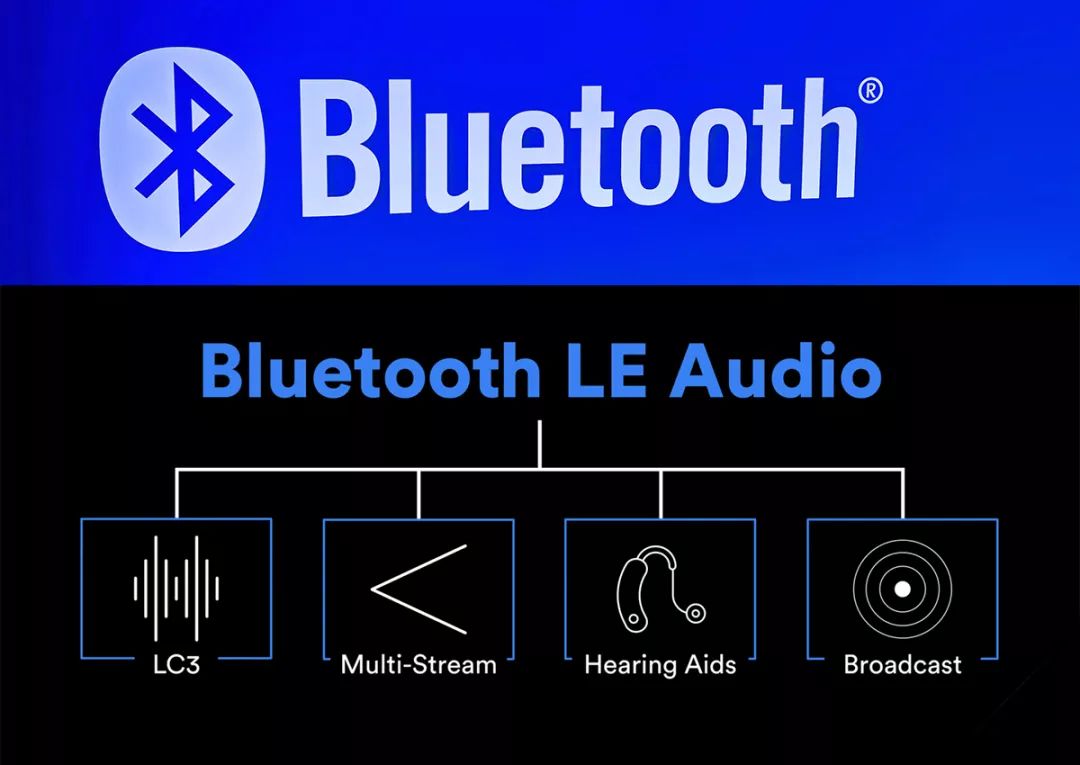
The restraint of “true wireless”
The current Bluetooth standard stipulates that a Bluetooth sending device can only connect to a single receiving device. If you want to make a true wireless headset, the most direct idea is to establish a separate connection channel between the two headsets and the device, and distinguish the left and right channels in the device, and transmit them to the left and right headsets respectively. However, the problem is that two independently connected channels not only have requirements on the transmission bandwidth of the device, but also need to be synchronized without delay on both sides, which places high requirements on the device.
Another difficulty is the compatibility issue. In order to improve the sound quality of Bluetooth transmission a few years ago, manufacturers also created a lot of wireless transmission codes. The most basic of these standards is the SBC code released by the Bluetooth Technology Alliance, but its standards are set early, slow to update, and the compressed sound quality is serious. Therefore, in recent years, Sony and Qualcomm have led the aptX and LDAC standard coding. The sound quality is far better than SBC coding, but they are not a unified standard.
For example, aptX, its requirement is that both the playback device and the receiving device must use Qualcomm’s Bluetooth module. With so many Bluetooth standards and devices, if you want to make two independently connected headphones, it will be another test of device compatibility and delay accuracy.

If there are difficulties, someone will overcome them. Of course, the majority of TWS manufacturers have proposed their solution: Only use one headset as the main headset. After the main headset receives the Bluetooth signal from the device, it forwards the information of one channel to another. One headset can be used. This method only requires the main headset and the device to establish a standard Bluetooth protocol, which has good compatibility, but there are two major disadvantages. First, the battery attenuation of the main headset is significantly faster than that of the secondary headset. Because there is a headset transfer, there is a delay not only between the primary headset and the device, but also between the primary and secondary headsets.

The countermeasures of big manufacturers
I believe here, some people will be confused. As one of the risers of TWS headsets, AirPods rarely have problems such as delays, so why do n’t TWS headset manufacturers imitate Apple ’s solution directly? Because the connection principle of AirPods is not simply the transfer of headphones, but to solve the problem of headphone synchronization by “overhearing”. This method uses a proprietary protocol developed by Apple and has patent protection. Small factories can only retreat. Seek to adopt the relay scheme next.
In principle, AirPods does not adopt the method of connecting two lines independently. There is still only one channel between the headset and the device, but Apple passes the key for listening to the secondary headset through a set of its own protocol. So that only one headset is connected to the main headset, but the secondary headset can “overhear” the audio package between the device and the main headset. The device transmits stereo to the main earphone. The main earphone only needs to analyze mono audio, and the sub earphone can analyze the other side, which greatly reduces the bandwidth and power consumption required for transmission.
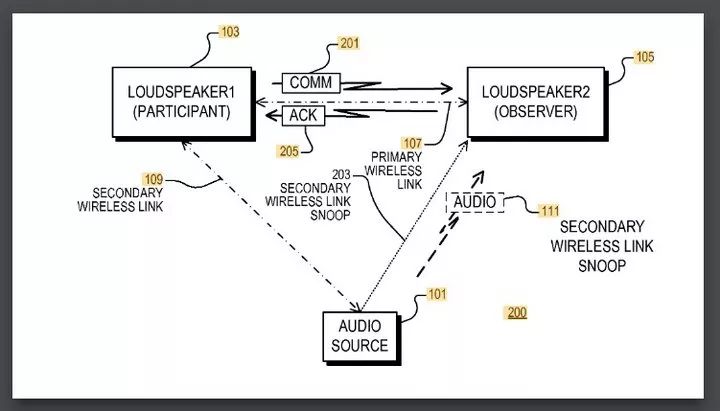
Not only that, Apple also supports audio from a single phoneBroadcast to several AirPods headsets to share. As for the stability and delay when connecting, Apple gave the W1 chip inside AirPods to solve it.
AirPods ’” Overhearing “solution solves the synchronization problem between the two headphones, but it still cannot solve the problem of poor battery power between the two headphones, because” Overhearing “is not a direct connection. Most of the data exchange between AirPods and the device still needs a main headset to bear it. The short-term power gap is not large, but the use time is long. As the power decays, the main headset runs out of power, and the secondary headset may 30% of the amount. Now that the AirPods generation has been in service for three years, severe power mismatch between left and right headphones has been a common problem of the first generation.
However, Qualcomm adopts the method of independent connection of two headphones. Devices since the Snapdragon 845 platform have TWS + true wireless mode. The device can communicate with the left and right headphones at the same time and share power consumption. TWS mode. In TWS + mode, the maximum battery life can reach 9 hours.
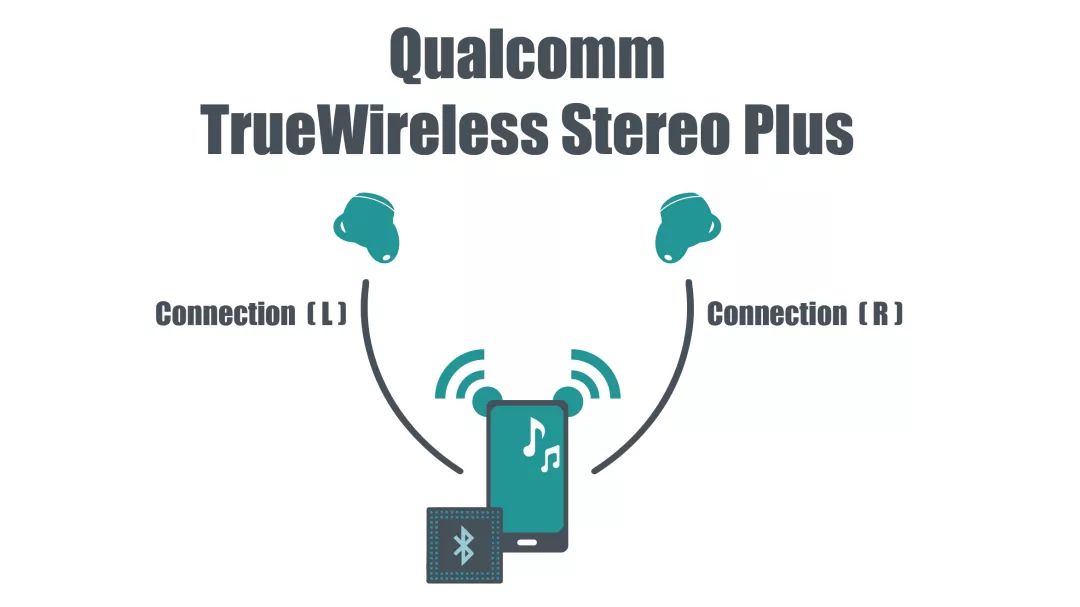
At the same time, in order to improve the listening experience on the earphone side, Qualcomm also introduced a new generation of Bluetooth communication chip QCC3026. The chip supports the Bluetooth 5.0 standard, while reducing power consumption, it can realize low-latency connection devices, and the QCC3026 supports SBC, AAC, and aptX encoding, which can solve compatibility problems to the greatest extent. Of course, Qualcomm TWS + technology only supports headsets equipped with Qualcomm’s Bluetooth chip and mobile phones with Snapdragon 845 and above mobile phones. It has a certain degree of closedness and the chip is expensive.
Not only Apple Qualcomm, but also many manufacturers have also developed Bluetooth synchronization technologies, such as Hengxuan ’s LBRT low frequency forwarding solution, MTK ’s TWS MCSync connection method, and Huawei Kirin A1 dual-frequency binaural transmission solution. But for now, manufacturers are still fighting on their own, there is no ultimate solution to rule the rivers and lakes, and the release of the LE Audio standard may solve this problem.
The end of chaos
According to the Bluetooth Technology Alliance, LE Audio uses a new codec, the low-complexity communication codec (LC3). Compared with the original SBC codec, LC3 will be able to provide more High sound quality, even when the bit rate is reduced by 50%, it can still transmit normally, so as to provide higher quality audio under low bit rate transmission conditions, Reducing the transmission power consumption of TWS headphones. And the transmitter can directly connect the left and right TWS units at the same time, which greatly reduces the delay and improves the stability.
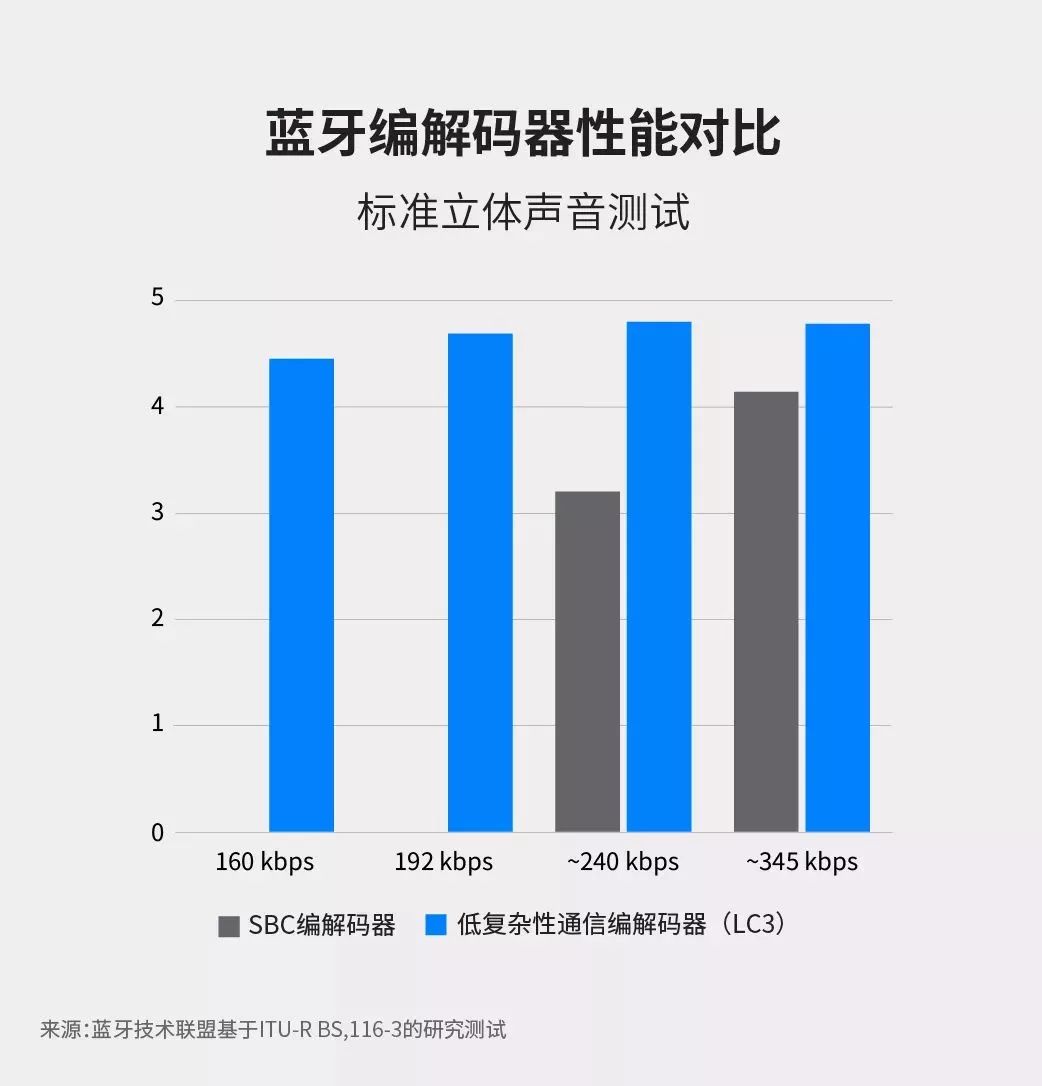
The most important thing is that LE Audio has introduced a unified Bluetooth connection standard and also uses dual independent audio channels. Users can synchronize multiple and independent audio transmissions between a single audio source device and multiple audio receiving devices. According to the Bluetooth Technology Alliance, multi-audio streaming technology can provide a better stereo experience, make the use of voice assistant services more seamless, and switch between multiple audio source devices more smoothly.
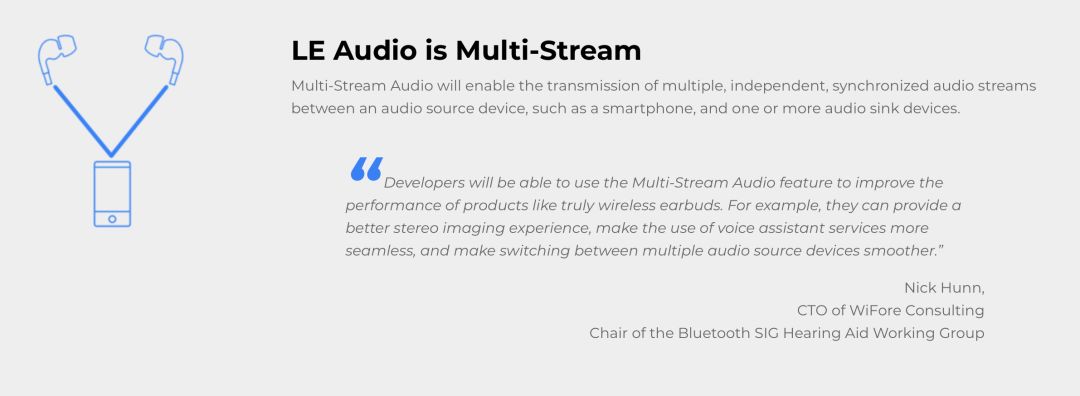
Like AirPods, LE Audio also has the function of broadcasting audio. Today, a single audio source device can broadcast one or more audio streams to an unlimited number of audio receiving devices. The Bluetooth Technology Alliance stated that the purpose of broadcasting audio is to promote future Bluetooth audio sharing. This audio sharing can be either personal or location-based. Users can share music on smartphones with family and friends; airports, bars, Public places such as gyms, cinemas, and conference centers can also share Bluetooth audio to enhance visitors ’experience.

Of course, this update does not fundamentally solve the problem of Bluetooth sound quality. If you want to hear high-quality Bluetooth sound, you still have to resort to APTX-HD, LDAC, HWA and other coding standards.
The future of TWS
However, even if LE Audio can really dominate the world, let mobile phones and headphones support LE


I believe here, some people will be confused. As one of the risers of TWS headsets, AirPods rarely have problems such as delays, so why do n’t TWS headset manufacturers imitate Apple ’s solution directly? Because the connection principle of AirPods is not simply the transfer of headphones, but to solve the problem of headphone synchronization by “overhearing”. This method uses a proprietary protocol developed by Apple and has patent protection. Small factories can only retreat. Seek to adopt the relay scheme next.
In principle, AirPods does not adopt the method of connecting two lines independently. There is still only one channel between the headset and the device, but Apple passes the key for listening to the secondary headset through a set of its own protocol. So that only one headset is connected to the main headset, but the secondary headset can “overhear” the audio package between the device and the main headset. The device transmits stereo to the main earphone. The main earphone only needs to analyze mono audio, and the sub earphone can analyze the other side, which greatly reduces the bandwidth and power consumption required for transmission.

Not only that, Apple also supports audio from a single phoneBroadcast to several AirPods headsets to share. As for the stability and delay when connecting, Apple gave the W1 chip inside AirPods to solve it.
AirPods ’” Overhearing “solution solves the synchronization problem between the two headphones, but it still cannot solve the problem of poor battery power between the two headphones, because” Overhearing “is not a direct connection. Most of the data exchange between AirPods and the device still needs a main headset to bear it. The short-term power gap is not large, but the use time is long. As the power decays, the main headset runs out of power, and the secondary headset may 30% of the amount. Now that the AirPods generation has been in service for three years, severe power mismatch between left and right headphones has been a common problem of the first generation.
However, Qualcomm adopts the method of independent connection of two headphones. Devices since the Snapdragon 845 platform have TWS + true wireless mode. The device can communicate with the left and right headphones at the same time and share power consumption. TWS mode. In TWS + mode, the maximum battery life can reach 9 hours.

At the same time, in order to improve the listening experience on the earphone side, Qualcomm also introduced a new generation of Bluetooth communication chip QCC3026. The chip supports the Bluetooth 5.0 standard, while reducing power consumption, it can realize low-latency connection devices, and the QCC3026 supports SBC, AAC, and aptX encoding, which can solve compatibility problems to the greatest extent. Of course, Qualcomm TWS + technology only supports headsets equipped with Qualcomm’s Bluetooth chip and mobile phones with Snapdragon 845 and above mobile phones. It has a certain degree of closedness and the chip is expensive.
Not only Apple Qualcomm, but also many manufacturers have also developed Bluetooth synchronization technologies, such as Hengxuan ’s LBRT low frequency forwarding solution, MTK ’s TWS MCSync connection method, and Huawei Kirin A1 dual-frequency binaural transmission solution. But for now, manufacturers are still fighting on their own, there is no ultimate solution to rule the rivers and lakes, and the release of the LE Audio standard may solve this problem.
The end of chaos
According to the Bluetooth Technology Alliance, LE Audio uses a new codec, the low-complexity communication codec (LC3). Compared with the original SBC codec, LC3 will be able to provide more High sound quality, even when the bit rate is reduced by 50%, it can still transmit normally, so as to provide higher quality audio under low bit rate transmission conditions, Reducing the transmission power consumption of TWS headphones. And the transmitter can directly connect the left and right TWS units at the same time, which greatly reduces the delay and improves the stability.

The most important thing is that LE Audio has introduced a unified Bluetooth connection standard and also uses dual independent audio channels. Users can synchronize multiple and independent audio transmissions between a single audio source device and multiple audio receiving devices. According to the Bluetooth Technology Alliance, multi-audio streaming technology can provide a better stereo experience, make the use of voice assistant services more seamless, and switch between multiple audio source devices more smoothly.

Like AirPods, LE Audio also has the function of broadcasting audio. Today, a single audio source device can broadcast one or more audio streams to an unlimited number of audio receiving devices. The Bluetooth Technology Alliance stated that the purpose of broadcasting audio is to promote future Bluetooth audio sharing. This audio sharing can be either personal or location-based. Users can share music on smartphones with family and friends; airports, bars, Public places such as gyms, cinemas, and conference centers can also share Bluetooth audio to enhance visitors ’experience.

Of course, this update does not fundamentally solve the problem of Bluetooth sound quality. If you want to hear high-quality Bluetooth sound, you still have to resort to APTX-HD, LDAC, HWA and other coding standards.
The future of TWS
However, even if LE Audio can really dominate the world, let mobile phones and headphones support LE



However, even if LE Audio can really dominate the world, let mobile phones and headphones support LE